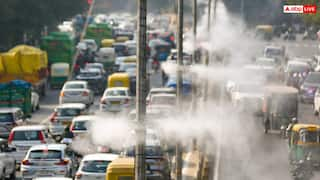Diwali Firecrackers Cause PM2.5 Spike, But ‘Air Quality Returns To Pre-Festival Level In 24Hrs’, Says Study
The study has been conducted by Airvoice, a company involved in devising air quality solutions. The report analyses data from 180 CPCB stations in 14 states between 2019 and 2023.

It’s a no-brainer by now that firecrackers cause pollution to spike in North India, especially Delhi-NCR, on Diwali night, but a new study suggests that the impact is “transient”, and that PM2.5 levels largely return to pre-festival levels as soon as the next night.
The study has been conducted by Airvoice, a company involved in devising solutions for monitoring and managing air quality indoors and outdoors. The report analyses data from 180 Central Pollution Control Board (CPCB) stations in 14 states between 2019 and 2023, to provide “the most extensive insight to date into how Diwali celebrations contribute to seasonal air pollution”.
“The festival night of Diwali sees PM2.5 concentrations soar across northern India, with New Delhi, Uttar Pradesh and Haryana experiencing significant increases,” the report says, adding that “PM2.5 levels exceed the National Ambient Air Quality Standards (NAAQS) by up to 875%” in some areas.
However, it adds that air quality recovers within 24 hours. “Despite the drastic increase in pollution during the celebration, the effects are mostly short-lived. In most of the states, air quality returned to pre-festival levels within 24 hours…” it says.
In a note of caution, the researchers added that the report only focuses on PM2.5 pollution, “the concentration of which is proven to have a strong correlation with per capita respiratory diseases, and does not consider multiple toxic gases and heavy metals also emitted during firecracker combustion”.
Toxic metals such as aluminum, manganese, and cadmium, which are released during firecracker burning, can remain in the atmosphere long after the smoke clears, contributing to chronic respiratory illnesses, the report adds.
Another key finding of the study is that firecracker bans are largely ineffective, with the report calling for “more innovative solutions to mitigate short-term pollution spikes while respecting cultural traditions”.
ALSO READ | What Makes PM2.5 The Most Important Factor In Efforts To Beat Air Pollution
Delhi Most Polluted On Diwali Night
According to the report, Delhi, Uttar Pradesh and Haryana have the most polluted air on Diwali, based on average PM2.5 concentration (2019-2023). Bihar and Punjab round up the top 5.
Rajasthan reportedly exhibits the most significant difference between the average air quality in October/November and on Diwali night. Madhya Pradesh, Punjab, Tamil Nadu, Bihar are the others among the top 5.
In a statement accompanying the report, Airvoice India CEO Col. Ashwini K. Channan said their “research team has conducted the most geographically comprehensive study that has been released in recent times”.
“In recent years, the number of monitoring stations has increased substantially in many regions of India and more pre-test air quality information has become available,” he added.
“Unfortunately, however, there are still not enough stations in the whole country. For this reason, only 14 regions were included in the study,” he added, saying “sufficiency and openness of various air quality data is a prerequisite for improving the situation”. “After all, thanks to measurements it is possible not only to understand the current situation, but also to assess the effectiveness of measures taken. Therefore, I sincerely hope that the amount of air quality information available and understandable to everyone will grow every year. This will allow people, businesses and governments to make informed decisions."
Related Video
Indore Water Crisis: Contaminated Supply Causes Deaths, Authorities Face Severe Negligence Questions
Top Headlines





































